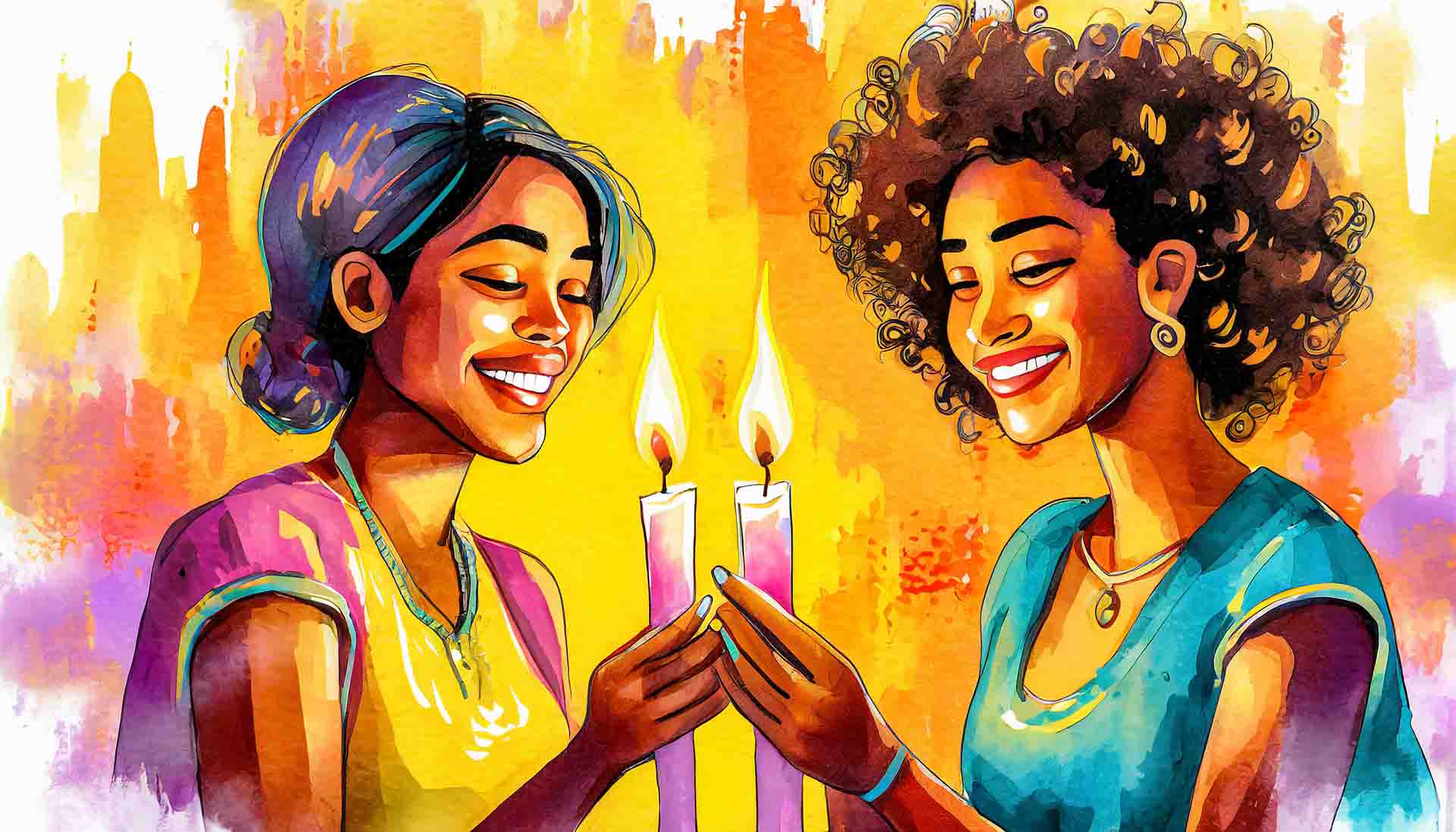It’s impossible to know with any certainty when humans began to practice rituals and ceremonies. The earliest evidence of Homo Sapiens practicing rituals dates back 70,000 years. The worship of a python, as it turns out. It’s even further back for Neanderthals, who began burying their dead a staggering 130,000 years ago (at least).
In both cases, these events were part of human life tens of thousands of years before any of the religions of our present day. Including the rituals and ceremonies we’re all familiar with.
Humanism, through humanist ritual and ceremony, recognizes that to create rituals and construct ceremonies around them is a deeply human activity. One essential to human life in all cultures for much longer than our collective memory, recorded history, or current cultural practices.
Where humanists differ from some in the present day is our assertion that these activities should serve our needs, not the belief systems or institutions they’re often associated with. In other words, we should feel free to acknowledge and meet our need for ritual and ceremony in ways that make us happy and healthy now.
In this post, the first in my series Exploring Non-Religious Ritual and Ceremony, I’ll be providing an introduction to the concept of secular humanist ritual and ceremony. Then, in the following articles, I’ll discuss one type of ceremony at a time and provide example scripts for each one.
What is Ritual?
Put simply, a ritual is a set of actions performed primarily for their symbolic and/or psychological value. Everyday rituals often form around habits or routines, giving repetitive tasks a deeper meaning or added value.
For example, part of your morning routine may be to have a cup of coffee, but how you go about it and what you do or think about during that time could constitute a ritual.
You make your coffee at a specific time, use a specific mug, sit in a specific chair, and think about specific things. Perhaps you also avoid certain activities during this time such as using your phone or watching television.
None of these things are necessary to drink your coffee, but you’ve ritualized the habit in a way that is meaningful and pleasing to you. You’ve probably, consciously or unconsciously, constructed this ritual to help put your mind and body in a place that prepares you for the day ahead.
Rituals can, and often are, much more formal and explicit in their meaning and significance.
A “unity ritual”, for example, is part of most weddings. Two candles lighting one, binding together of hands, encircling the couple in flowers, all to symbolize their union.
Our lives are full of ritual. They center and soothe us on a daily basis. They help us connect to our cultural and traditional roots. And they also help us transition from one phase of life to the next.
When we deem a ritual or collection of rituals of particular importance, a ceremony is often created around them.
What is Ceremony?
An easy way to understand the concept of ceremony is as a container for multiple rituals.
For example, the traditional western wedding is a series of connected rituals consisting of a prelude, processional, opening remarks, readings, the exchanging of rings, pronouncement, first kiss, recessional, and closing followed by a reception.
A typical western funeral consists of a viewing of the deceased’s body, a service of remembrance, a procession from the service to the burial site, burial, and finally a reception.
In each case, the rituals are customized to the participants, but the container and the order of rituals is often left intact.
Another defining attribute of ceremony is that it’s usually a group event. Whereas many rituals are personal and private, ceremonies are usually constructed as public or semi-public displays for families, communities, or even the wider world.
Ceremonies typically have audiences and multiple participants, including officiants who facilitate the enactment of the various rituals and the transitions between them.
What is Humanist Ritual and Ceremony?
Now that we’ve established what ritual and ceremony are, what is Humanist ritual and ceremony?
Humanist or non-religious ritual and ceremony differs from what we think of as traditional ritual and ceremony in its guiding principles and purpose.
A religious ritual or ceremony is often constructed and performed in a way that “honors God” or demonstrates alignment with or even submission to a higher power or belief system.
If that’s what the participants want, great! But many today do not want that.
The value of explicitly Humanist or non-religious ritual and ceremony is that it recenters the actions and events on the individuals involved; what they believe and find meaningful. Regardless of the religion, culture, or traditions they may have been born into.
Who Creates and Officiates Humanist Rituals and Ceremonies?
Anyone who wants to try can create and officiate a Humanist ritual or ceremony can give it a go. There are however people who specialize in this activity who are called Humanist Celebrants and Humanist Chaplains.
Humanist Celebrants are professionals who offer the creation and officiating of non-religious ceremonies as a service. Some celebrants do this for free, but most charge a fee as it is their occupation. Humanist Chaplains are typically attached to an institution–such as a hospital, university, or local humanist community–and that’s where they tend to perform ceremonies.
The art and craft of creating and officiating a ceremony combines creative writing, public speaking, performance, and a knowledge of ritualistic and ceremonial practices.
What Types of Rituals and Ceremonies do Humanists Observe?
There is no set of rituals or ceremonies prescribed by Humanism. Quite the opposite, actually.
The philosophy of Humanism encourages humans to find and make their own meaning. To express their values in ways that authentically express who they are and what they believe in.
That said, we still have the same life milestones as everyone else. Which is why there are humanist versions of ceremonies for all of life’s most commonly marked occasions.
- Wedding Ceremonies
- Elopement Ceremonies
- Vow Renewal Ceremonies
- Funeral Ceremonies
- Memorial Ceremonies
- Celebration of Life Ceremonies
- Baby Naming and Welcoming Ceremonies
- Adoption Ceremonies
- Coming of Age Ceremonies
- Retirement Ceremonies
Then there are ceremonies that are not likely to be a part of the standard religious or cultural repertoire we’re all familiar with.
- Trans Naming Ceremonies
- Chosen Family Ceremonies
- Affirmation Ceremonies
- Appreciation Ceremonies
- Bespoke Life Milestone Ceremonies
Who are Humanist Rituals and Ceremonies for?
The short answer is: anyone who wants them. All that makes a humanist ceremony “humanist” is its focus on the individual or individuals involved and a source of meaning that is not reliant on the supernatural.
That being the case, folks who are not religious but still want to mark important life milestones in a meaningful way are likely to seek out explicitly humanistic ritual and ceremony.
Up Next: Non-Religious Wedding Ceremony: an Easy to Understand Guide with 3 Examples
In this post I’ve explained the concepts of Humanist ritual and ceremony. I’ve also outlined a number of ceremonies that can be created in a non-religious context. In the following posts in the series I’ll be examining each of these ceremonies one at a time, providing examples for each one. Since the following posts will take a long time to create, I’ll be releasing them a bit irregularly. Which means if you’d like to follow along, it’s important to join my humanism newsletter below. Hope to see you back for the rest of the series!


0 Comments